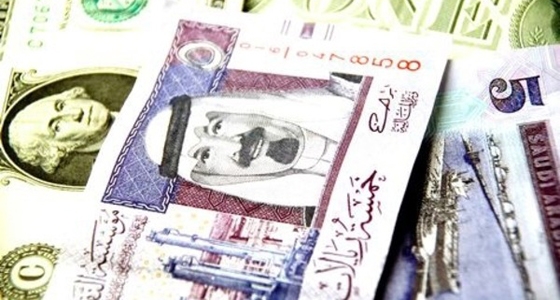Sound fiscal management and healthy reserves have set Saudi Arabia on track for an upgrade of its key ratings, improving the Kingdom's investment and growth prospects.
On May 29, ratings agency Standard & Poor's (S&P) issued an upward revision for its outlook on Saudi Arabia's long-term sovereign credit ratings from stable to positive. The agency confirmed the Kingdom's long-term and short-term foreign and local currency sovereign credit ratings at AA-/A-1+, while leaving the transfer and convertibility assessment unchanged at AA+. S&P's move marks its first revision to Saudi Arabia's outlook since 2007, prior to the global financial crisis.
"Growth fundamentals have strengthened in Saudi Arabia," the agency said. "A long track record of high and steady non-oil growth, averaging 8.0% during 2005-2012, has contributed to overall average real GDP growth of 6.5%. In our opinion, the improved growth prospects for the non-oil economy will bolster the economy's resilience to exogenous shocks such as a decline in oil prices."
Monica Malik, economist with investment bank EFG-Hermes, thinks it unlikely the revision will have a significant impact since borrowing costs are already down due to the Kingdom's strong macroeconomic position and liquidity. "Nevertheless, the upgrade is a positive confirmation of the improved fundamentals," Malik told the Bloomberg news agency on May 29.
S&P also said it would consider taking Saudi Arabia's rating to the next level within two years, should the Kingdom maintain its pace of economic growth.
An upgrade would see the rating raised to the increasingly rare AAA. However, the agency said it would hold Saudi Arabia at the current level if its growth trajectory falters, or if it sees signs that the accumulation of foreign reserves is slowing.
The S&P upgrade was the second such revision by a ratings agency in a matter of months. In mid-March, Fitch issued an investors' note saying it had raised its country outlook to positive from stable. The move was, in part, a reflection of what the ratings agency described as tangible progress made by Saudi Arabia to address key potential sources of social stress, improved access to housing finance and higher levels of nationals employed in the private sector.
Though generally positive, Fitch, however, flagged concerns about continued dependence on oil and related activities. The agency acknowledged that non-oil expansion had consistently outpaced growth within the oil sector in recent years, but noted that hydrocarbons still accounted for 90% of state revenue.
"Swings in the oil price pose policy challenges, though substantial buffers mean it would take a prolonged period of much lower oil prices to undermine the public and external financial positions," the agency said in its report issued on March 20.
Fitch, too, floated the possibility of upgrading Saudi Arabia's rating in the near term from AA-minus, if it shows progress in reducing unemployment among nationals, further diversifies the economy and implements measures to stem the rise in the breakeven oil price set to balance its budget, estimated by Fitch as being $76 a barrel in 2012.
The two agencies agreed there would be some slowing of the Saudi economy this year due to an easing in demand for oil. Their findings are in line with an IMF report released on May 20, which said GDP would increase by 4.4% in 2013, down from 6.8% last year. With the non-oil sector set to expand by 7.6% in 2013, the contribution of oil to GDP growth will be down on previous years.
Although the IMF has said inflation could become an issue later in the year if an increase in demand fuels supply-side problems, more moderate growth levels, as projected by the fund, are expected to curb any excess in spending. The outlook suggests the Saudi Arabian economy should remain steady in the second half of 2013, paving the way for a possible ratings upgrade in the next year or two.
Oxford Business Group
24 June





















































